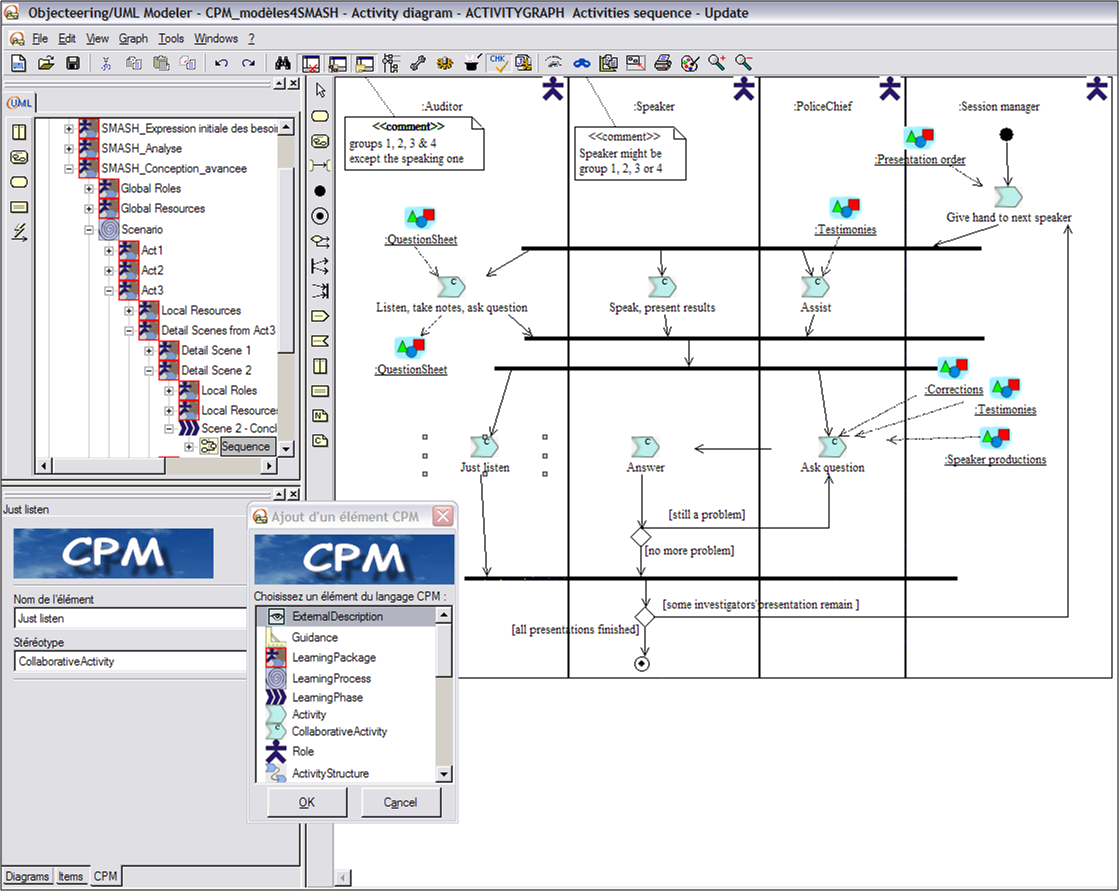CPM
Definition
<pageby nominor="false" comments="false"/>
“Within the industrial context of e-learning, Educational Modeling languages (EML) aim in essence to describe the content and process within "units of learning" in order to support reuse and interoperability. These languages emphasize the formal specification of models called scenarios. We present in this paper our research results about the proposition of a UML-based modeling language dedicated to Problem-Based Learning design. The CPM (Co-operative PROBLEM-BASED LEARNING Metamodel) language successes in providing a rich-graphical formalism to designers/authors of PBL. Our contribution covers the instructional design process from initial requirements step to design step upstream EMLs. Thanks to a binding mechanism provided when using dedicated tools, the CPM language finally conforms to the EML definition.” ([Laforcade, 2005: Abstract]).

Software
CPM is a research system.
CPM is implemented a module for the free-of-charge UML CASE-tool Objecteering.
Links
Bibliography
- Laforcade, A. Towards a UML-Based Educational Modeling Language, Advanced Learning Technologies, 2005. ICALT 2005. Fifth IEEE International Conference on (2005), pp. 855-859. Abstract/Citeulike. ISBN 0-7695-2338-2